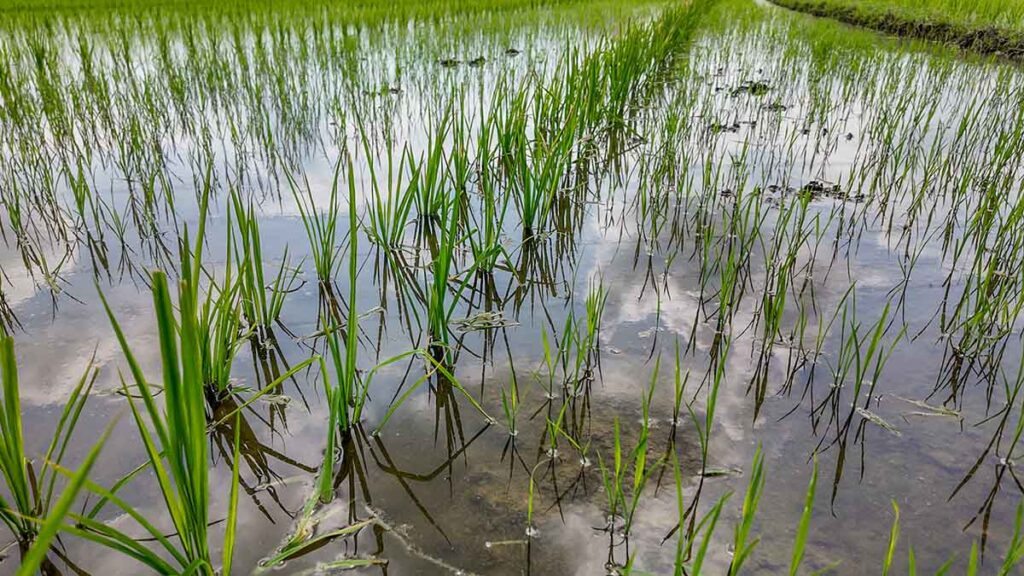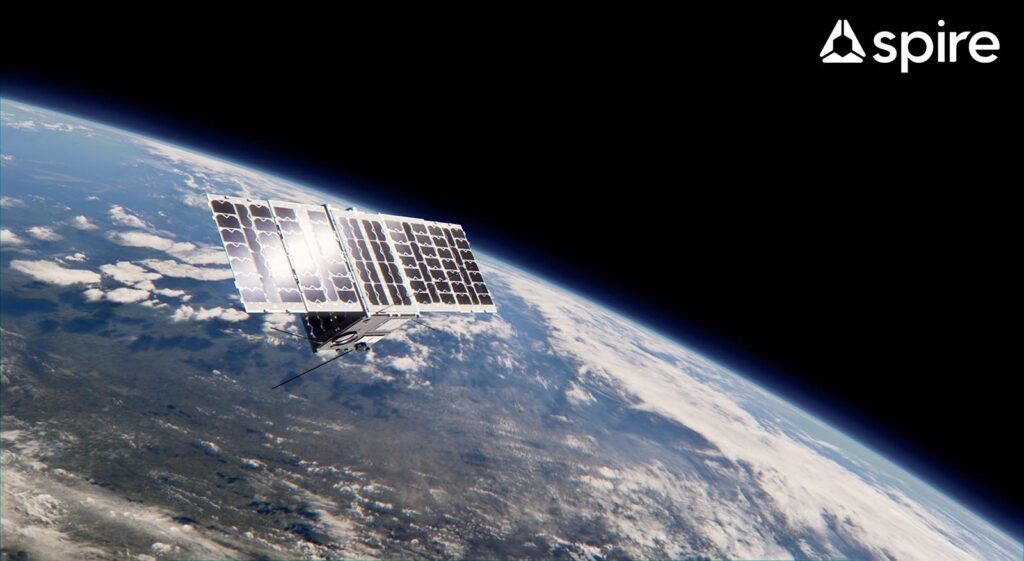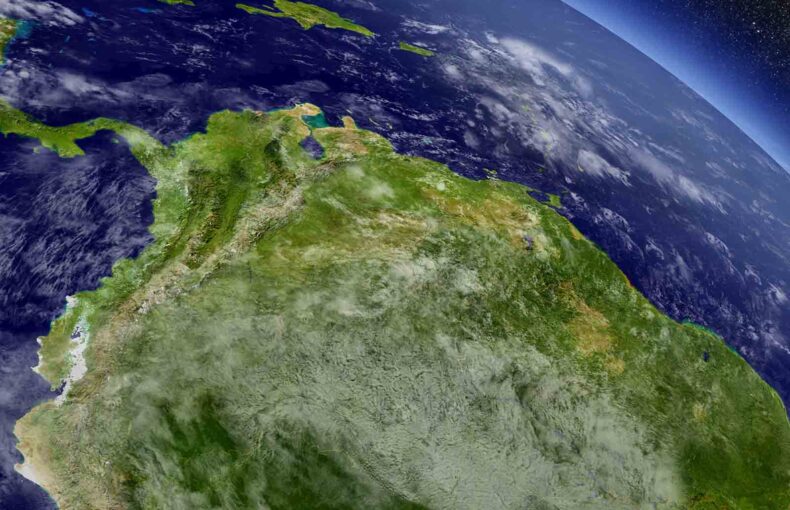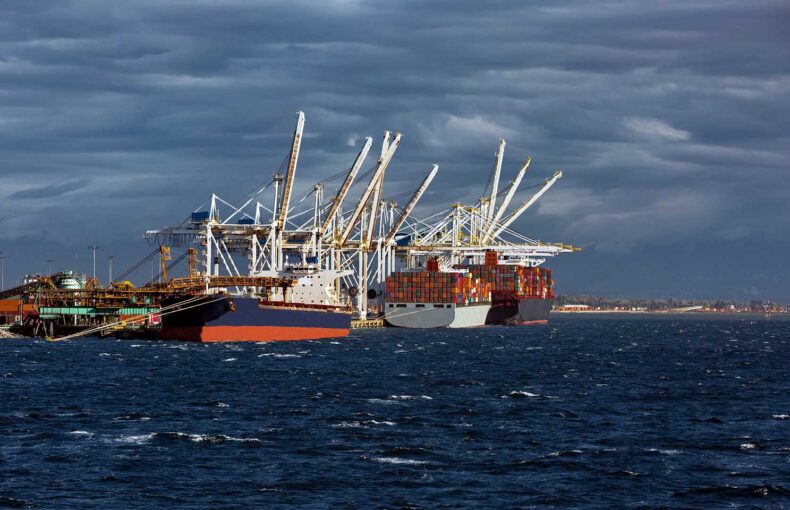How Spire Global’s enhanced weather forecasting can revolutionize agriculture
Written by:
Travis Turgeon
Independent Investigative Writer
Meghan Mussoline
Marketing Content Consultant, Spire Weather and Climate
- The agricultural industry's vulnerabilities in a changing climate
- The economic impact of inaccurate weather forecasting on agricultural supply chains
- HyMS sensor technology: enhancing weather forecasting for agriculture
- Leveraging HyMS data to improve crop yield and mitigate risk
- Building resilience with HyMS data from Spire Global
 Written by
Written byMeghan Mussoline
Product Marketing Manager, Spire Weather and Climate
We all know that agriculture is the backbone of the global economy, providing billions of people with food, jobs, and fulfilling livelihoods.
However, agriculture is also highly vulnerable to the changing global climate, affected by everything from small temperature fluctuations to more extreme seasonal conditions like drought and floods.
The impact of local, regional, and seasonal climate shifts is becoming more evident by the day, and agricultural producers know this better than most.
With so much risk associated with climate change, particularly in the food production sector, one thing stands out as a certainty. Without accurate and timely weather forecasting, farmers will continue to face challenges that lead to lower yields, crop disease, and economic losses that may not be recoverable.
At Spire Global, we recognize the need for more accurate weather predictions. For this reason, we’re pioneering the movement to integrate advanced Hyperspectral Microwave Sensor (HyMS) technology into our satellites. With this capability at our fingertips, we are on the path to revolutionizing the agriculture sector with high-resolution weather data from Low Earth Orbit (LEO).
The agricultural industry’s vulnerabilities in a changing climate
While many industries face threats from the rapidly changing global climate, agriculture is among the most severely affected.
The impact of rapidly shifting weather patterns
Those who work in agriculture know that changing weather patterns, season by season and year by year, are causing severe disruptions in food production. Weather and storm cycles are now so variable that farmers have trouble preparing for the following season. One of the only ways to build resilience is to become more diversified ahead of a “worst-case” scenario.
While diversification in farming can be beneficial, it can also mean lower profit margins, as different resources and strategies drive up operational costs.
The problem is that changes aren’t consistent. In fact, they are far from consistent. Rainfall patterns shift so much that a single location can see floods one year and droughts the following. When drought and flood events occur during planting or harvest, they can completely dismantle a growing season, leaving farmers to “pick up the pieces” and wait for their next opportunity.
The economic toll of extreme weather events
Extreme weather events do more than just hurt crops. They lead to sometimes irreversible financial losses that impact everything from global supply chains all the way down to individual households. When there are not enough products available to meet demand, you can expect everyone to feel the impact, from the grower to the consumer.
To make matters worse, some agricultural insurance companies are rolling back coverage and raising premiums, showing just how much financial loss can come from unpredictable weather patterns. In fact, crop insurance costs reached record highs in 2022, with crop insurance indemnities paying out over $19 billion to farmers that year.
The challenges of adapting to shifting weather patterns
While farmers have always needed to adapt to changing weather patterns and environmental conditions, the new level of unpredictability makes once-appropriate adaptation strategies ineffective at best.
But what can farmers do to build resilience to these often unusual swings in weather patterns?
- Diversify crops
- Improve irrigation methods
- Focus on soil management
- Plant climate-resilient crops
The examples above illustrate how farmers can prepare for unpredictability. However, each strategy requires significant effort, some of which drives down income due to higher operational costs or smaller harvests.
Without accurate, real-time weather forecasting data that can better predict temperature fluctuations, storms, and other stressful weather events, farmers are left scrambling for solutions.

The economic impact of inaccurate weather forecasting on agricultural supply chains
Having explored how climate change and sporadic weather patterns can affect agricultural production and global economies, let’s look at how inaccurate or delayed weather forecasting can impact food supply chains and end markets.
Disruptions to supply chains from poor weather predictions
Inaccurate or delayed weather forecasting can severely impact agricultural supply chains. Poor predictions can result in challenges with harvests, transportation, and trade, all of which disrupt the flow of goods and pressure regional and global food security.
How does this happen?
It’s just a bit of economics: supply and demand. When extreme weather events wipe out crop cycles, there is less supply, creating kinks in the global food supply chain. The only way to satisfy demand is to find new ways to fill the pipeline, which not only compounds the greenhouse gas emissions from supply chains (which are responsible for more than half of global emissions) but also drives up food costs for the consumer.
Economic losses from weather-related delays
Supply chains have many moving variables, and when weather-related delays occur, they can lead to significant economic losses, particularly when perishable goods like fruits and vegetables are involved. Often, food is shipped globally, not only regionally, so a delay of just a couple of days can lead to food becoming contaminated, growing mold, or rotting.
According to a study by the FAO, around 30% of food produced for human consumption globally is lost annually along the supply chain, a staggering amount of food and money, all things considered.
Price volatility due to uncertainty in weather patterns
Volatility is another concern in agricultural markets, often fueled by supply chain challenges stemming from poor weather predictions and changing environmental conditions.
If yields and harvests are less than expected in a given season due to challenges related to a changing climate, the commodity’s price can increase drastically in a short period. According to the World Economic Forum, climate change is the most significant factor contributing to rising food costs.
This inherently affects global food markets, creating volatility that can lead to economic instability, food insecurity, and famine, especially in countries or communities that rely heavily on imports (i.e., islands, remote locations, etc.).
HyMS sensor technology: enhancing weather forecasting for agriculture
Now that we know how climate change and inaccurate weather forecasting can affect everything from individual farmers to global food markets, let’s get into how companies like Spire Global are building resilience to the changes happening on our planet.
What is HyMS sensor technology?
Hyperspectral Microwave Sounding (HyMS) sensor technology is set to revolutionize the weather forecasting landscape. The sensors, which fit on a satellite the size of your standard carry-on luggage, provide more accurate atmospheric measurements than traditional microwave sensors used in the industry.
Compared to traditional weather data sensors, the fine-tuned atmospheric measurements from HyMS sensors can be used to predict weather events with far greater precision. How? Gathering data for temperature, moisture, and precipitation throughout the entire column (fine vertical level) of the atmosphere using the unique high spectral resolution of the sensor.
How does HyMS sensor technology work?
HyMS sensors passively measure faint microwave signals from the Earth’s atmosphere to the satellite in LEO, at a range of frequencies. Once received, they are used to understand current weather patterns and atmospheric conditions.
This method, which produces highly accurate and high-resolution insights, greatly benefits the agriculture industry. Understanding the conditions within the atmospheric environment and providing insights into hydrometeors, such as precipitation, has proven critical to better forecasting (and nowcasting) and should continue to drive innovation and improvements.
Timely atmospheric monitoring and vertical resolution
While HyMS sensors offer numerous benefits that position them as the future of data collection for weather forecasting, two key advantages stand out: their ability to provide timely observations from a planned constellation to assess and monitor atmospheric conditions and collect data across finer levels of the atmosphere and provide timely precipitation information, critical for agriculture.
Since accurate weather forecasting can make or break a growing season, farmers must be able to utilize timely weather data to avoid potentially catastrophic losses. The good news is that satellites equipped with HyMS sensors can collect this data without gaps, as they can receive data through all sorts of weather conditions and at night, enabling agricultural producers to react to changing weather and climate conditions before an event occurs.
When you combine the above with the ability to collect data on precipitation, storm formation, cloud movement, and pressure with greater accuracy and finer vertical resolution of the atmosphere, you have a revolutionary technology that drives change throughout the agricultural sector and beyond.
Global coverage and high precision insights
No state-of-the-art sensor can provide much insight or value without being able to monitor the area needed to make a real difference. While HyMS sensors can provide atmospheric data under nearly any weather condition and at all times of day, they won’t deliver the insights needed for enhanced global weather forecasting applications unless they are positioned in orbit at the right time and with the right trajectory.
Space-as-a-service companies like Spire Global operate expansive constellations of small satellites in LEO, enabling organizations to deploy HyMS sensors into space and ensure their coverage needs are met. Since Spire’s satellites can be developed and operated for mission-specific needs, it helps customers eliminate the costs of creating their own satellite fleets, collecting data only when and where needed.

Leveraging HyMS data to improve crop yield and mitigate risk
One of the most significant ways in which HyMS sensors provide value to farmers is by improving crop yields and mitigating risks associated with inaccurate weather forecasting.
Optimizing crop management with accurate forecasts
Accurate and timely weather forecasting empowers food producers to make better decisions about managing their crops and mending their fields for the coming years. With HyMS, farmers have a clear outlook on weather conditions, allowing them to plant, apply pesticides and fertilizers, and harvest at optimal times. Making more informed decisions about these matters is known as precision farming, which has been proven to improve crop yields significantly.
According to two 2021 studies, precision farming can increase yields by an average of 6%. That could mean hundreds of millions of dollars or more of economic inputs on a national and global scale.
Preventing crop damage from extreme weather events
It’s becoming more and more common in the United States and abroad. Extreme weather events like droughts, floods, heat waves, and storms are developing at a record pace, leaving little to no warning for those unequipped with the right weather insights. By utilizing weather forecasts developed with HyMS sensor technology, farmers can better prepare for extreme weather events.
How do they prepare? With advanced notice, farmers can take preventive measures, such as protecting their most valuable crops with covers, preparing additional drainage systems, and avoiding fertilizer applications before heavy rain. All of the above can save food producers a significant amount of money while increasing their resilience to future challenges.
Maximizing resource efficiency and reducing waste
Precision weather forecasting with HyMS can lead to far more effective research management than traditional predictions. With more insight into future weather conditions, farmers can reduce watering or pesticide applications before heavy rainfall, limit soil tillage ahead of heavy windstorms, or minimize soil disturbance ahead of heat waves – all of which can significantly improve resource use.
Building resilience with HyMS data from Spire Global
With the agricultural sector facing very real challenges due to unpredictable weather patterns and climate change, Spire recognizes the need for significant improvements in weather forecasting.
Spire’s HyMS-enabled constellations provide weather forecasters and climate scientists with highly accurate, timely weather data that can not only improve the state of agricultural operations but also limit risk and build resilience to the rapidly changing global environment.



